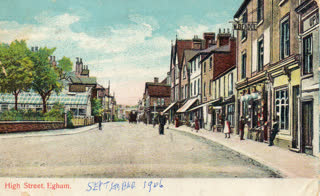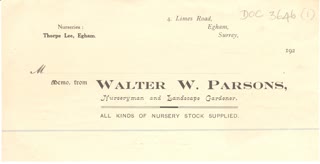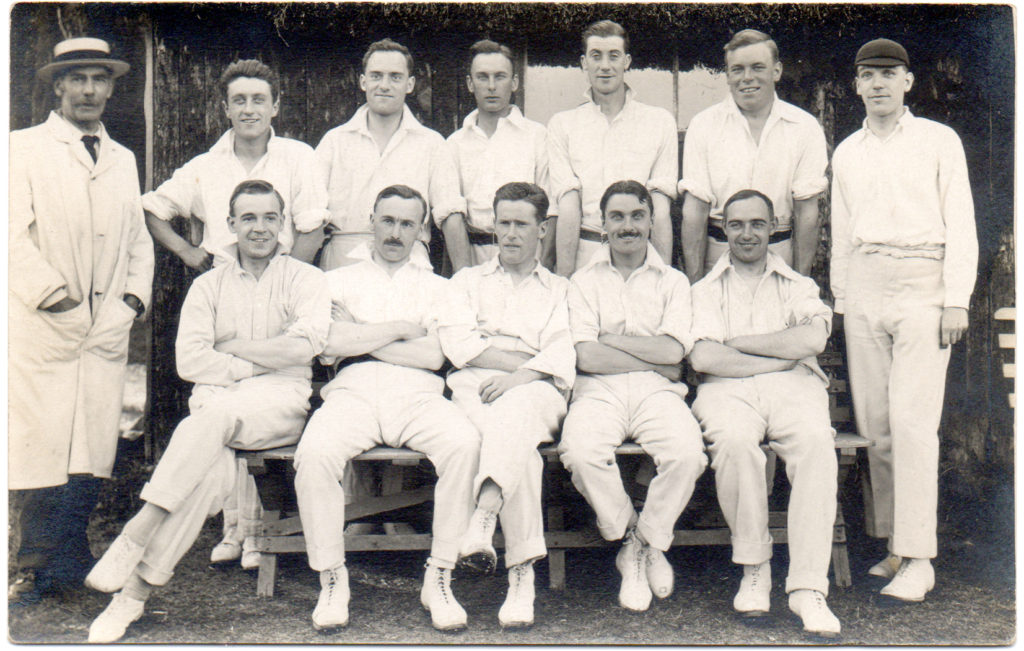Just Williams Part 5 – some of the Victorian tradesmen who shaped Egham High Street
Margaret C Stewart
Over the last few years we have seen many of the businesses in Egham High Street close – and welcomed new ones. Even without a pandemic these frequent changes are not unusual but it is always pleasing to see how some businesses stay for years, often under family management. This short series of articles looks at some of the businesses which began trading in Egham during the Victorian era and continued for over 50 years. What they have in common is that they were all begun by men called William…
5. William Whale and William Parsons, nurserymen and florists 142 High Street.
A semi-detached house ‘Willsworth’, at 142 High Street, became a plant nursery and florist under the care of William Whale from 1856. He named the business Magna Charta Nursery and became successful enough to employ one assistant. The site had originally been part of The King’s Head Inn, which had been completely rebuilt in 1845, selling off land it no longer required.
Born in Hampshire in 1820, William Whale and his wife Mary had been living at the Sandpits (Englefield Green) from at least 1851, where he worked as a gardener. His two children, Albert (1842) and Alice (1848) had been born in Hampshire before the family moved to Surrey.
Albert was to become a seed merchant and spent most of his working life in his wife’s homeland of Germany. Alice, who remained unmarried, worked for her father and kept house for him after Mary Whale died in 1882.
William retired in 1899, aged 81 and moved to Winchester where he lived with Alice until his death in 1902. She supplemented the family income by taking in lodgers.
The Egham business was sold to William Parsons, originally from Mortimer in Bucks but who had been working as a gardener in Stratfield Saye, Hampshire in the 1890s. From at least 1894 he gave his address as Rusham House, Whitehall Lane. This is not as grand as it sounds – he appears to have been renting the gatehouse from the then owner, Hugh Thomas Clarendon Collis, a hop merchant , who had already sold off 30 acres of the Rusham House estate.[i]
William Parsons was probably working locally as a gardener, while still maintaining a property in Mortimer. He may even have been gardening for Mr Collis.
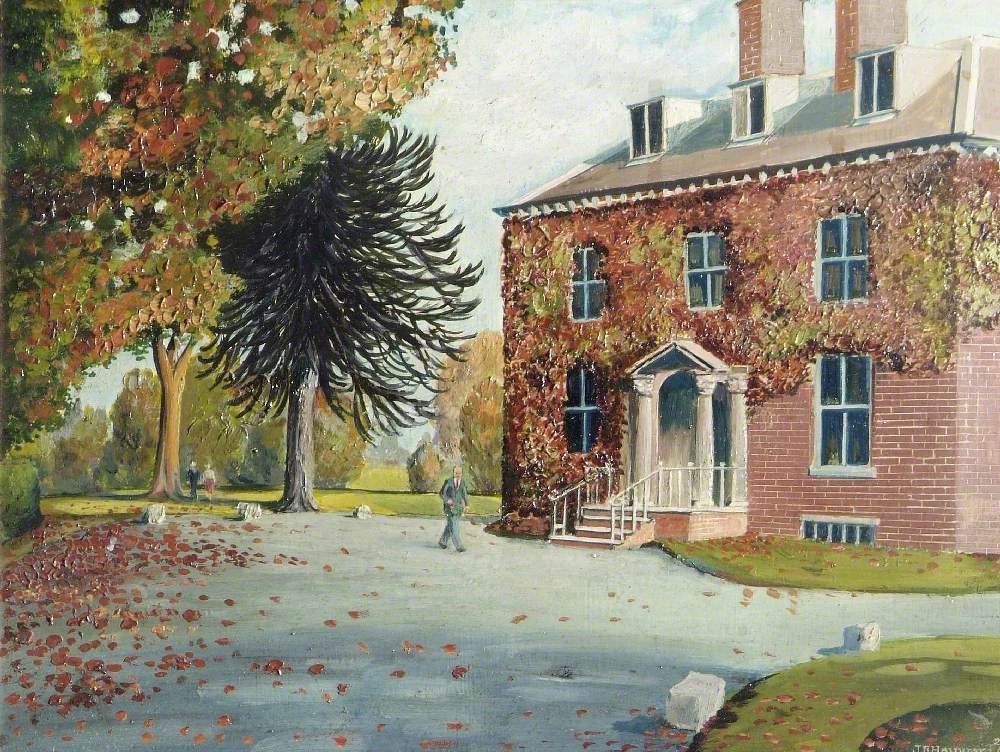

On buying Magna Charta nursery, William and his wife Caroline Rose moved into the adjoining accommodation. They had 6 children (Evangeline, Walter, Harold, Frederick, May Linda and Gwendoline Vera) of whom Walter, Evangeline and May Linda grew up to help in the business.
After the First World War broke out, son Walter, who was now married and living in nearby Limes Road, was called up as a gunner in the Royal Garrison Artillery.
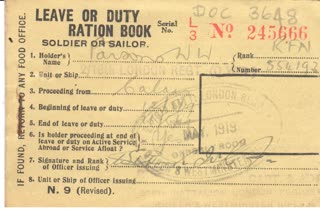
Issued to W Parsons, Egham 1919 (Egham Museum Doc 3648 )
After discharge in 1919 it is likely that he continued to work with his father and as a nurseryman on his own account (it may be coincidental that in 1931 a W. Parsons – Greengrocer had a lock-up shop at No 186-7 High Street) but he later became a tobacco warehouse clerk and continued to live in Limes Road until his death in 1954.
Frederick (1892-1950) also lived locally, working on the railways. Harold, described as an ‘imbecile,’ spent his entire life(1890-1915) living at home.
A Non-Conformist, William was superintendent of the Wesleyan Chapel Sunday School for many years until there was a disagreement. He always decorated the nursery sign for Ascot week with roses and fuchsias in pots and was also responsible for decorating the Royal stand at Ascot Race Course. By 1911 he had become a Fellow of the Royal Horticultural Society.
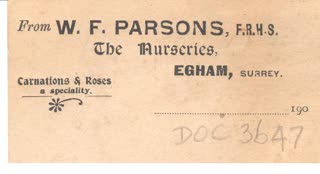
Harold Parsons died in March 1915, followed only a few months later by his mother Caroline.
William remarried in 1916 to Lille Plumbridge.
He continued to run the nursery until his death in November 1926, leaving his second wife the sum of £2414 (worth about £188,781.52 today). She turned the conservatory of the house into a shop. Eventually Lillie sold the nursery in about 1930 & moved away, with William’s three unmarried daughters.
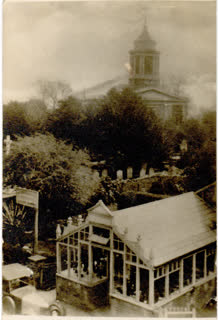
Writing to Egham Museum, his daughter Gwen mentioned a rumour that Dick Turpin[ii] used to hide in the cellar running under their house and the King’s Head next door. After William’s death his widow was afraid to go down into cellar to stoke the furnace because it was ‘ghostly’- other family members also felt cold rush of air as though someone was walking past.
The nursery continued under George Parker and then Walter Leslie Purvis or Parvis until 1936 when the site was converted into three new shops, 140a, 141 and 142.
Nos 140a-157 High Street were demolished in their turn 1966-67 to make way for The Precinct, a collection of shops and flats. Most of what was No 142 is now 7 The Precinct, home to Bayfields Opticians. Shops at 140a -141 equate to nos 1-6 The Precinct.
General sources: Egham Museum photograph and document collections (including ratebooks),
https://www.ancestry.co.uk , https://www.findmypast.co.uk
[i] Rusham House later transferred out of private hands and became home to the offices of British American Tobacco, Shell, Richardson-Vicks and, most recently Procter & Gamble. It is now under development to become new residences for students of Royal Holloway.
[ii] In the 17th and 18th centuries, Hounslow Heath was notorious as the haunt of highwaymen and footpads, and Dick Turpin is known to have been involved in a theft there in 1735. There is no formal record of his ever visiting Egham which had its own problems with highway robbery https://eghammuseum.org/crime-and-highway-robbery-in-egham/ . It may have been an entirely different but no less dangerous man who took refuge in the cellar of the King’s Head!



